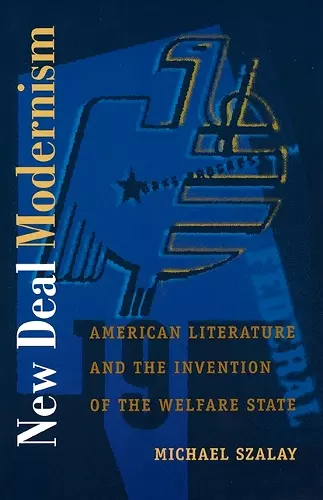New Deal Modernism
American Literature and the Invention of the Welfare State
Format:Hardback
Publisher:Duke University Press
Currently unavailable, and unfortunately no date known when it will be back

Argues that the writers of the 30s and 40s--Hemingway, Ayn Rand, John Dos Passos, Gertrude Stein, Richard Wright, Wallace Stevens et al. -- identified and understood the formal problems of literary modernism through an idea of the social and an idiom of social security made available by the New Deal welfare state.
Examines the effect that the rise of the welfare state had on American modernism during the 1930s and 1940s and, conversely, what difference modernism made to the New Deal's famed invention of "Big Government."In New Deal Modernism Michael Szalay examines the effect that the rise of the welfare state had on American modernism during the 1930s and 1940s, and, conversely, what difference this revised modernism made to the New Deal’s famed invention of “Big Government.”
Szalay situates his study within a liberal culture bent on security, a culture galvanized by its imagined need for private and public insurance.
Taking up prominent exponents of social and economic security—such as Franklin Delano Roosevelt, John Maynard Keynes, and John Dewey—Szalay demonstrates how the New Deal’s revision of free-market culture required rethinking the political function of aesthetics. Focusing in particular on the modernist fascination with the relation between form and audience, Szalay offers innovative accounts of Busby Berkeley, Jack London, James M. Cain, Robert Frost, Ayn Rand, Betty Smith, and Gertrude Stein, as well as extended analyses of the works of Ernest Hemingway, John Steinbeck, and Richard Wright.
“New Deal Modernism tells a strikingly new story about the relations of literature to political agency. Szalay’s work will be a welcome provocation, both to left revisionist scholarship on cultural politics and to the historiography of U.S. modernism.”—Sara Blair, University of Michigan
“An argument of striking range and precision. Oppositions of left and right, realist and modernist will look different from now on. A terrific book.”—Richard Ohmann, Wesleyan University
“Szalay brilliantly relates aesthetic debates of the 1930s to debates over how art might survive economic conditions in which art objects have little chance of competing with basic economic necessities. Szalay’s unique contribution is to show exactly how, in providing insurance against the market, the New Deal reinvented the project of making art.”—Frances Ferguson, Johns Hopkins University
“Through its frank assessment of New Deal culture, Szalay’s book adds mightily to the renascence of history-minded revisions of literary modernism. If you want to know how literary citizenship connected with the social motion of state initiatives like the Social Security Administration or the Federal Arts Project, then this is a very good place to begin.”—Andrew Ross, New York University
ISBN: 9780822325765
Dimensions: unknown
Weight: 862g
352 pages